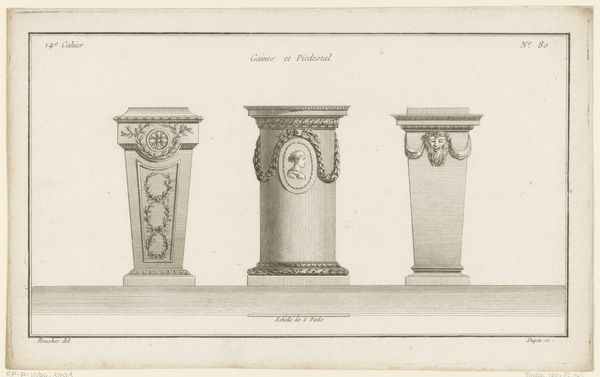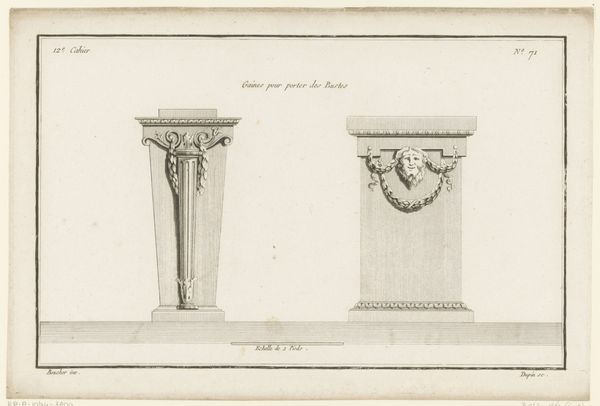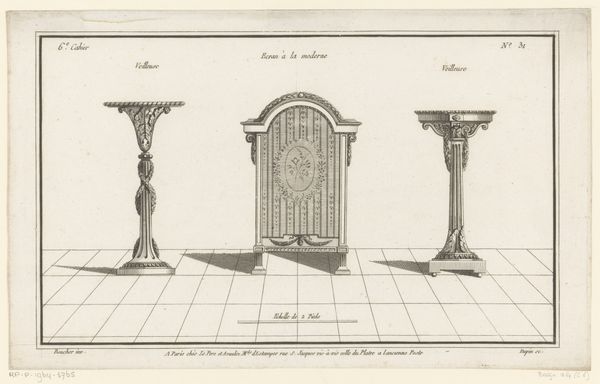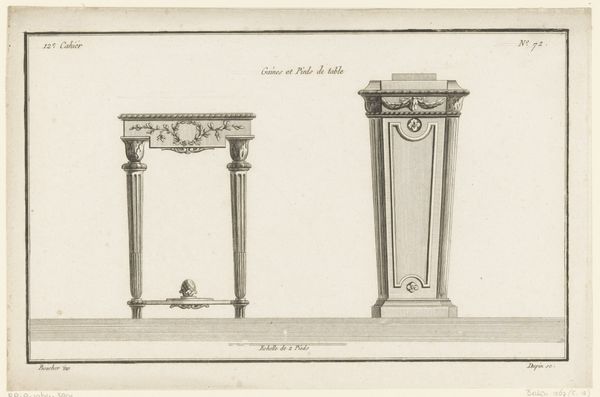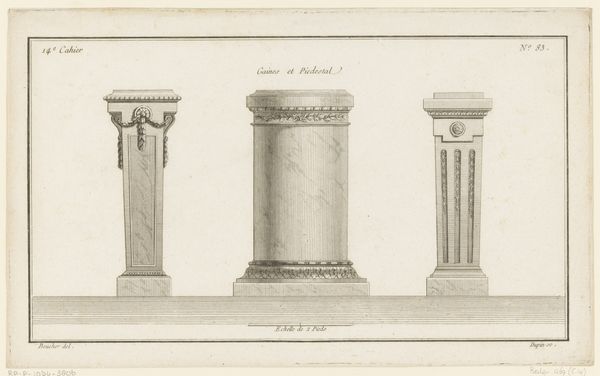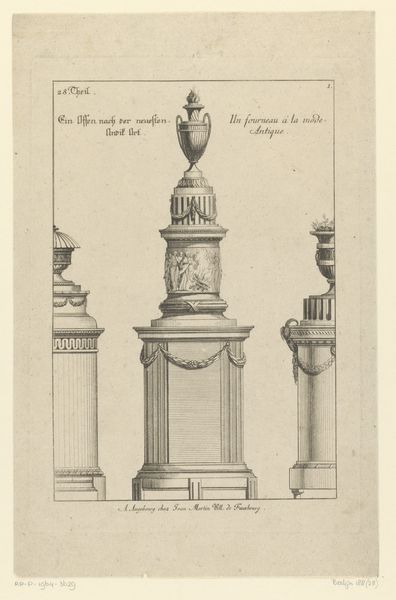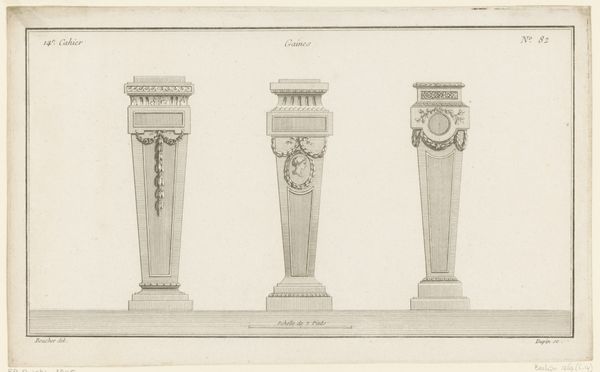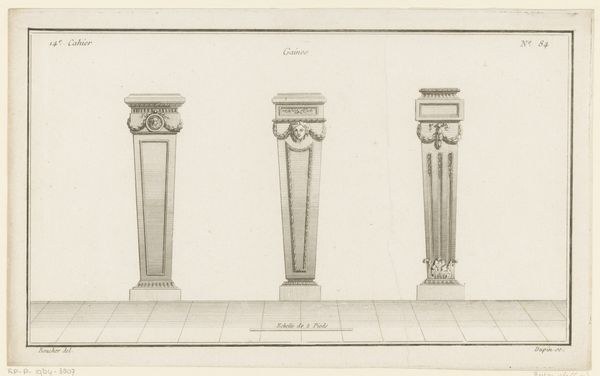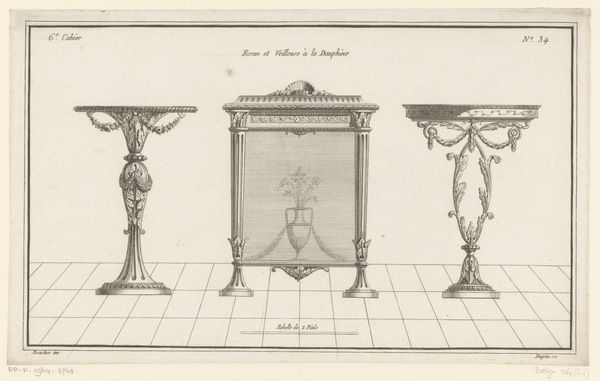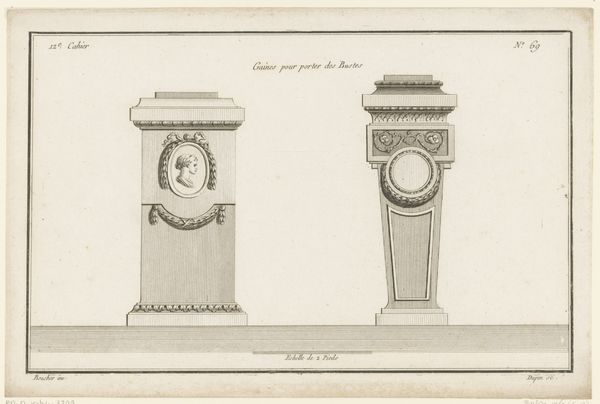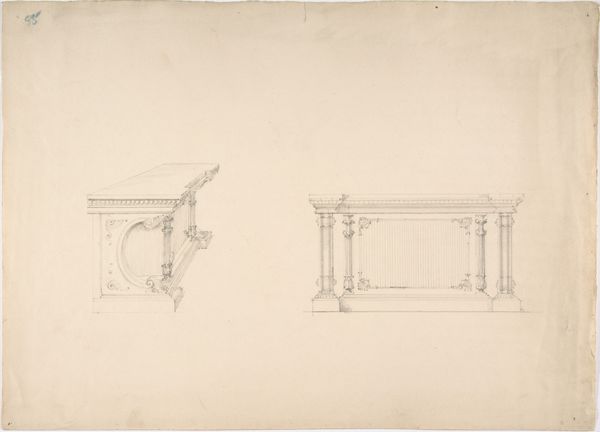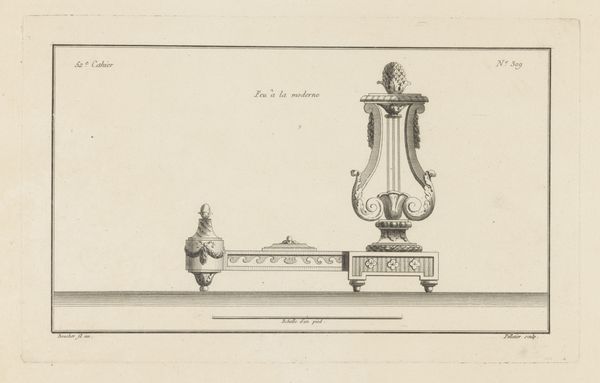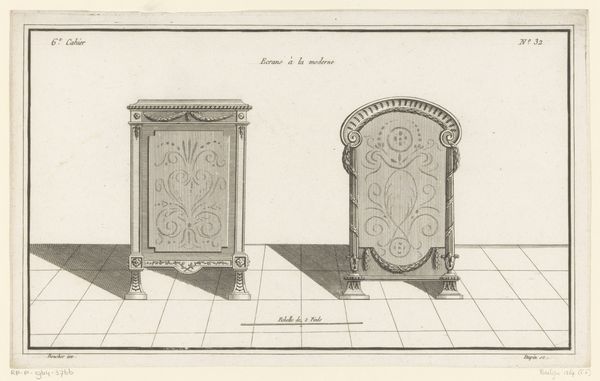
drawing, print, paper, engraving, architecture
#
drawing
#
neoclacissism
# print
#
classical-realism
#
paper
#
form
#
geometric
#
classicism
#
line
#
history-painting
#
engraving
#
architecture
Dimensions: height 202 mm, width 331 mm
Copyright: Rijks Museum: Open Domain
Nicolas Dupin made this print, Drie voetstukken met ramskoppen, around 1776, using etching and possibly some engraving. Take a look at the incredible detail. This wasn’t just drawing; it was a skilled process of incising lines into a metal plate, inking it, and then transferring that image onto paper. Dupin used these techniques to meticulously render three pedestal designs, complete with classical motifs like rams' heads and garlands. The precision and intricacy suggest a context of high craftsmanship, catering to an elite clientele with means. Prints like this were part of a visual culture that spread design ideas and fueled demand for luxury goods. The labor and skill embedded in this etching reflect the broader social dynamics of production and consumption in the late 18th century. This print reminds us that even seemingly simple images are born from complex processes, embodying layers of skill, social context, and material history.
Comments
No comments
Be the first to comment and join the conversation on the ultimate creative platform.
